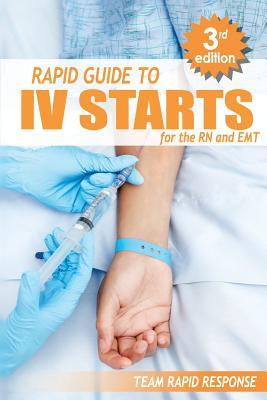Intravenous cannulation is one of the most difficult skills most RNs, LVNs and EMTs will learn. If you are scared out of your mind about starting IVs, you are not alone. It is an invasive and often painful procedure that requires both skill and practice to master.
Maybe you are worried about hurting your patient. Or perhaps you are afraid of appearing incompetent in front of the patient if you are unsuccessful. All too often it seems easier to just ask someone else.
Like any skill, some will be better than others. Some will learn faster, others it will take more time. Our goal is to provide you a RAPID and EASY way to master the IV stick! Not everyone will become an expert, and that's OK. But at a minimum, we want to impart every professional with the skill and confidence to start a routine, uncomplicated IV in their patient.
Whether you are a new-grad who needs the essentials or a seasoned professional looking to learn some advanced techniques, everyone can always learn something new.
In depth review of the following:
- Basics to Advanced Techniques
- Over 120 pages of text, graphics and pictures
- Gauges-choosing the correct gauge
- Basic anatomy and physiology of veins
- Strategies to distend veins and make them Pop Out!
- How to choose veins which to avoid
- A colorful, illustrated step-by-step guide to starting a standard IV
- 4 methods to threading the catheter
- 3 approaches to inserting the needle
- Guide to the "Floating technique"
- Visual guide to what you are doing wrong when a vein blows
- Finding and avoiding valves
- The Y-Bifurcation
- Inserting IVs in the elderly
- Vesicant medications
- Assortment of tips and tricks
Example Chapter
Threading the catheterAt this point both the tip of the needle and the tip of the catheter are inside the vein. You will now need to thread the rest of the catheter into the vein. The catheter is fully inside the vein when only the hub sticks out. There are several different methods to advancing the catheter
The Two Handed Technique
- You have already visualized flash, lowered your angle, advanced 1-2mm and released the tourniquet.
- Continue holding the needle in place
- With your non-dominant hand, grasp the hub of the catheter and slide it forward into the vein
- Slowly withdraw the needle
- Place your thumb on the hub of the catheter to hold it in place
- Use your index finger to press down above the site to prevent blood from spilling out
The Single Handed Technique
- You have already visualized flash, lowered your angle, advanced 1-2mm and released the tourniquet.
- Continue holding the needle in place.
- Use the index finger of the hand that is holding the needle to slide the catheter past the needle
- Continue sliding the catheter until it is fully inside the vein.
- If the flashback was very small, you may feel resistance...
